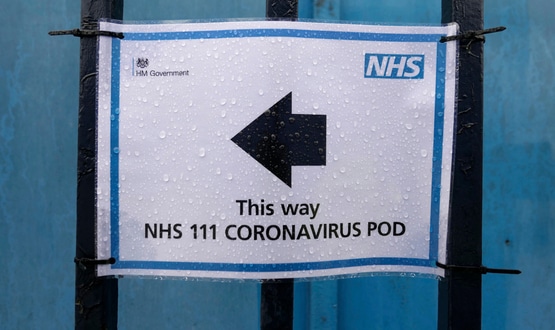Period of reflection post-Covid-19 is needed to learn about NHS innovation
- 12 August 2020

A period of reflection on what has been learnt about the nature of innovation in the NHS during the Covid-19 pandemic should take place ‘once the dust settles’, according to a report by The King’s Fund.
The ‘Technology and innovation for long-term health conditions’ report, suggests a process of reviewing exactly what happened in terms of the uptake of digital tools during the pandemic should be held – including whether the perceived barriers to innovations actually exist in reality.
“When the dust settles, we will need to reflect on the lessons from this period on the nature of innovation in the NHS,” it says.
“How much of the established narrative about the enablers and barriers to innovation in the NHS appear credible after the past few months? For example, are clinicians genuinely averse to adopting innovation if, albeit under extreme circumstances, they were willing and able to make such rapid changes to how they deliver services?”
The report also states there will be a need to “carefully review” the impact these innovations have had on staff and users.
“Once the UK is through the crisis, there will need to be a careful appraisal of the impact of these technologies introduced at pace, without the usual consultation, governance or evaluation, just as there will be a need to assess the impact of other changes such as to hospital discharge practices,” it says.
Evaluation of case studies
Research for the report, commissioned by the Academic Health Science Networks (AHSNs) in England, was originally carried out before the pandemic.
However, the document states that the findings can be applied to the increased uptake of digital health services which has happened during the Covid-19 crisis.
The report looked at four case studies from across the UK and the Nordic countries which use digital technology to deliver a step change in treatment – including Patients Know Best.
An evaluation of the case studies revealed the potential of technology and how it can be used for those living with long term health conditions.
“While there is some evidence that poorly designed digital technology can create a barrier between caregivers and patients, our case studies highlight the potential of technology to enable stronger therapeutic relationships, for example, through allowing more regular interaction than typically possible through face-to-face interactions alone,” it says.
However, the ability to make the most of tech, may not be as easy as it seems.
The report adds: “One overriding message from our case studies and other examples is that harnessing technology to deliver transformative change in health care is harder than it might initially appear.
“The types of innovations most likely to spread are often those that fit within existing structures, making small improvements to existing ways of doing things rather than delivering transformative change.”
The case studies, according to the report, also highlight the role AHSNs could play in helping to scale up digital innovation.
“Our case studies suggest that the AHSNs could play an important role in doing so. Each of the examples highlights the role of cross-cutting agencies, whether innovation funds, innovation centres or development agencies, in convening partnerships and structuring ambitious innovation processes,” the report adds.






